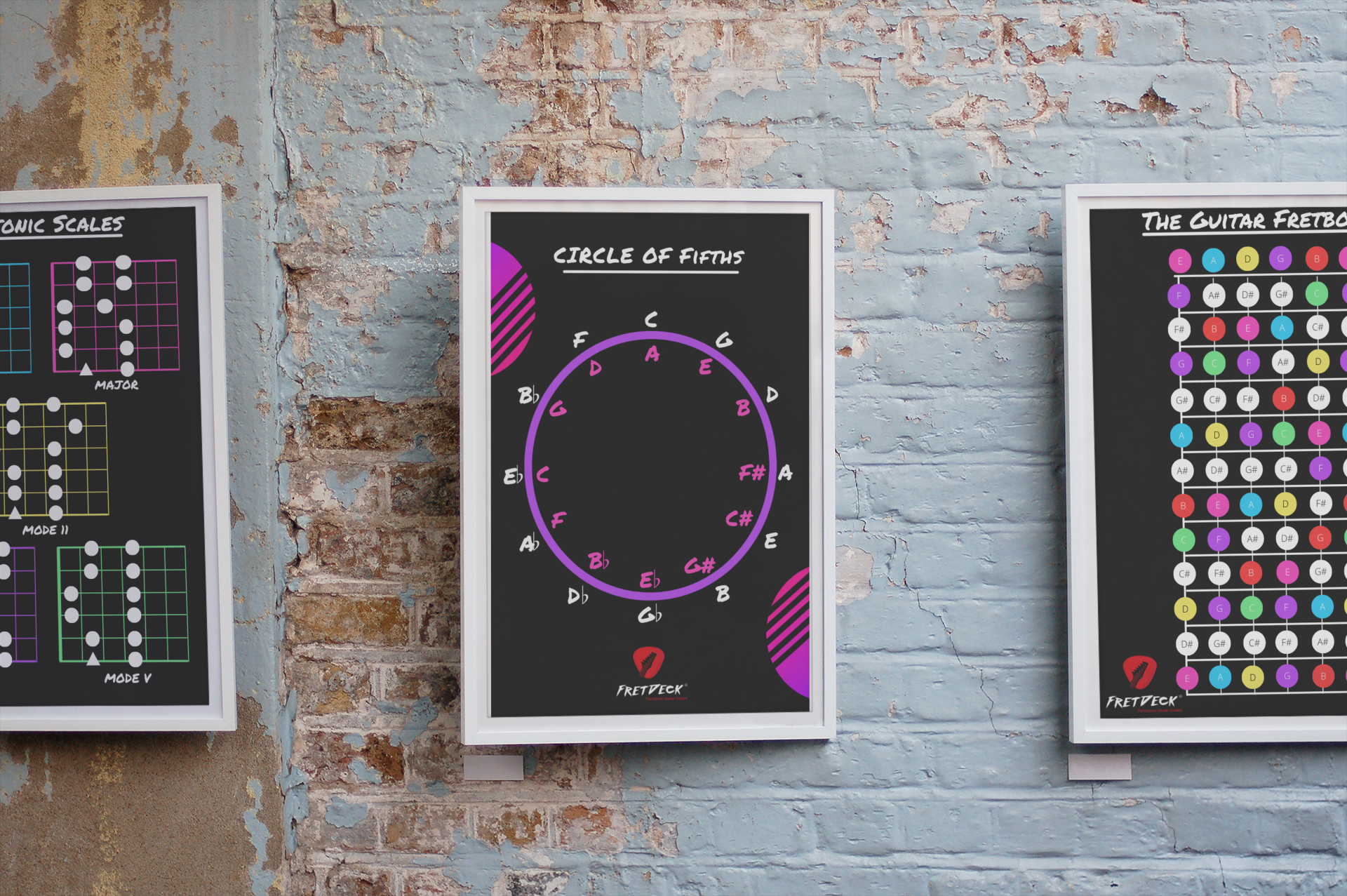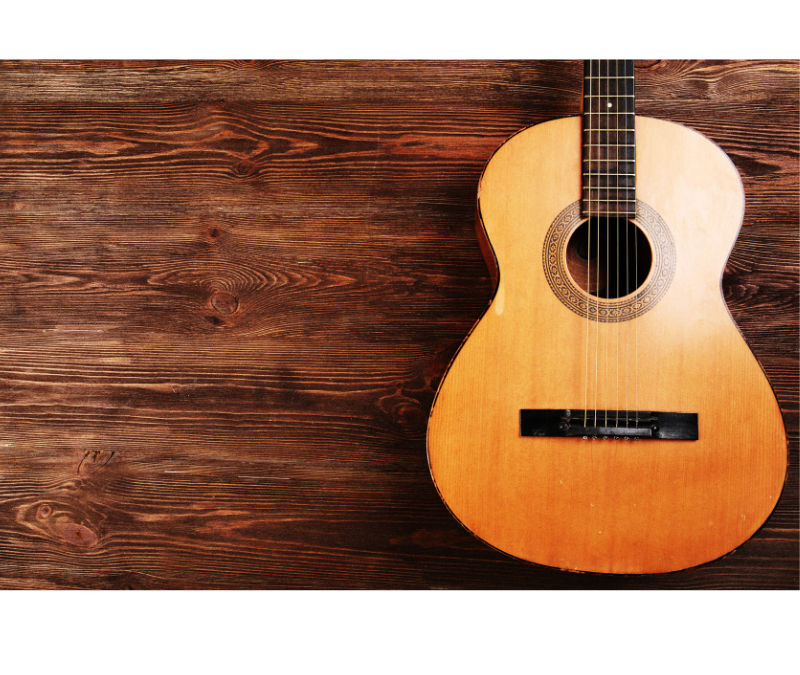Playing guitar is a journey filled with discovery, creativity, and continuous learning. One of the fundamental skills every guitarist should master is playing open chords. In this blog post, we will focus on open guitar chords in the key of G major. Specifically, we will cover how to play G major, A minor, B minor, C major, D dominant 7, and E minor. We will also explore various chord progressions using these chords, helping you create beautiful music and understand the essence of the key of G major. Let’s dive in and master these essential guitar chords!
Understanding the Key of G Major
Before we start with the chords, it’s important to understand the structure of the key of G major. The G major scale consists of the following notes: G, A, B, C, D, E, and F#. The chords that naturally occur in this key are:
- G major (I)
- A minor (ii)
- B minor (iii)
- C major (IV)
- D dominant 7 (V7)
- E minor (vi)
These chords form the harmonic foundation of the key and are used extensively in various genres of music. Now, let’s learn how to play each of these chords.

Download FREE Guitar Charts!
We have 27 FREE guitar charts to help you learn the guitar fretboard. Learn How to play chords and scales with these free resources.
Free Guitar Resources
G Major Chord
The G major chord is one of the most commonly used chords in guitar music. It has a bright, happy sound and is relatively easy to play.
G Major Chord Shape:
e|---3---
B|---3---
G|---0---
D|---0---
A|---2---
E|---3---
To play the G major chord:
- Place your ring finger on the 3rd fret of the low E string.
- Place your middle finger on the 2nd fret of the A string.
- Leave the D and G strings open.
- Place your pinky finger on the 3rd fret of the high E string.
- Strum all six strings.
A Minor Chord
The A minor chord has a melancholic, sad sound and is a crucial chord in many songs.
A Minor Chord Shape:
e|---0---
B|---1---
G|---2---
D|---2---
A|---0---
E|-------
To play the A minor chord:
- Place your index finger on the 1st fret of the B string.
- Place your middle finger on the 2nd fret of the D string.
- Place your ring finger on the 2nd fret of the G string.
- Leave the A and high E strings open.
- Strum from the A string down.
B Minor Chord
The B minor chord is a bit more challenging because it requires a barre. However, it’s essential for playing in the key of G major.
B Minor Chord Shape:
e|---2---
B|---3---
G|---4---
D|---4---
A|---2---
E|-------
To play the B minor chord:
- Barre the 2nd fret from the A string down with your index finger.
- Place your middle finger on the 3rd fret of the B string.
- Place your ring finger on the 4th fret of the D string.
- Place your pinky finger on the 4th fret of the G string.
- Strum from the A string down.
C Major Chord
The C major chord is another fundamental chord with a bright, harmonious sound.
C Major Chord Shape:
e|---0---
B|---1---
G|---0---
D|---2---
A|---3---
E|-------
To play the C major chord:
- Place your index finger on the 1st fret of the B string.
- Place your middle finger on the 2nd fret of the D string.
- Place your ring finger on the 3rd fret of the A string.
- Leave the G and high E strings open.
- Strum from the A string down.
D Dominant 7 Chord
The D dominant 7 (D7) chord adds a bluesy, jazzy feel to your progressions.
D Dominant 7 Chord Shape:
e|---2---
B|---1---
G|---2---
D|---0---
A|-------
E|-------
To play the D dominant 7 chord:
- Place your index finger on the 1st fret of the B string.
- Place your middle finger on the 2nd fret of the G string.
- Place your ring finger on the 2nd fret of the high E string.
- Leave the D string open.
- Strum from the D string down.
E Minor Chord
The E minor chord is one of the easiest chords to play and has a rich, deep sound.
E Minor Chord Shape:
e|---0---
B|---0---
G|---0---
D|---2---
A|---2---
E|---0---
To play the E minor chord:
- Place your middle finger on the 2nd fret of the A string.
- Place your ring finger on the 2nd fret of the D string.
- Leave the G, B, and high E strings open.
- Strum all six strings.
Chord Progressions in the Key of G Major
Now that you know how to play the essential open chords in the key of G major, let’s explore some common chord progressions. These progressions will help you understand how these chords work together to create music.
I – IV – V7 – I Progression
The I – IV – V7 – I progression is one of the most common and widely used progressions in music. It creates a sense of resolution and is perfect for many genres.
Progression: G – C – D7 – G
G: e|---3--- C: e|---0--- D7: e|---2--- G: e|---3---
B|---3--- B|---1--- B|---1--- B|---3---
G|---0--- G|---0--- G|---2--- G|---0---
D|---0--- D|---2--- D|---0--- D|---0---
A|---2--- A|---3--- A|------- A|---2---
E|---3--- E|------- E|------- E|---3---
vi – IV – I – V7 Progression
The vi – IV – I – V7 progression is another popular sequence that creates a strong emotional impact.
Progression: E minor – C – G – D7
Em: e|---0--- C: e|---0--- G: e|---3--- D7: e|---2---
B|---0--- B|---1--- B|---3--- B|---1---
G|---0--- G|---0--- G|---0--- G|---2---
D|---2--- D|---2--- D|---0--- D|---0---
A|---2--- A|---3--- A|---2--- A|-------
E|---0--- E|------- E|---3--- E|-------
ii – V7 – I Progression
The ii – V7 – I progression is common in jazz and creates a smooth, pleasing resolution.
Progression: A minor – D7 – G
Am: e|---0--- D7: e|---2--- G: e|---3---
B|---1--- B|---1--- B|---3---
G|---2--- G|---2--- G|---0---
D|---2--- D|---0--- D|---0---
A|---0--- A|------- A|---2---
E|------- E|------- E|---3---
Tips for Practicing Open Guitar Chords
- Start Slow: When learning new chords, start by practicing them slowly. Make sure each note in the chord rings clearly.
- Chord Transitions: Practice transitioning between chords smoothly. This is crucial for playing chord progressions effectively.
- Strumming Patterns: Experiment with different strumming patterns to add variety to your playing. Start with simple downstrokes and gradually incorporate upstrokes.
- Use a Metronome: Practice with a metronome to keep a steady rhythm. This will help you stay in time when playing with other musicians.
- Play Along with Songs: Find songs that use these chords and play along. This will help you understand how the chords fit into real music.
- Finger Placement: Pay attention to your finger placement. Ensure your fingers are pressing down on the strings just behind the frets to avoid buzzing.
- Practice Regularly: Consistent practice is key to mastering any instrument. Set aside time each day to practice these chords and progressions.
Conclusion
Mastering open guitar chords in the key of G major is an essential step for any guitarist. By learning G major, A minor, B minor, C major, D dominant 7, and E minor chords, you’ll have a solid understanding of the key of G major. You’ll also be able to play many song in this key!

Download FREE Guitar Charts!
We have 27 FREE guitar charts to help you learn the guitar fretboard. Learn How to play chords and scales with these free resources.
Free Guitar Resources










